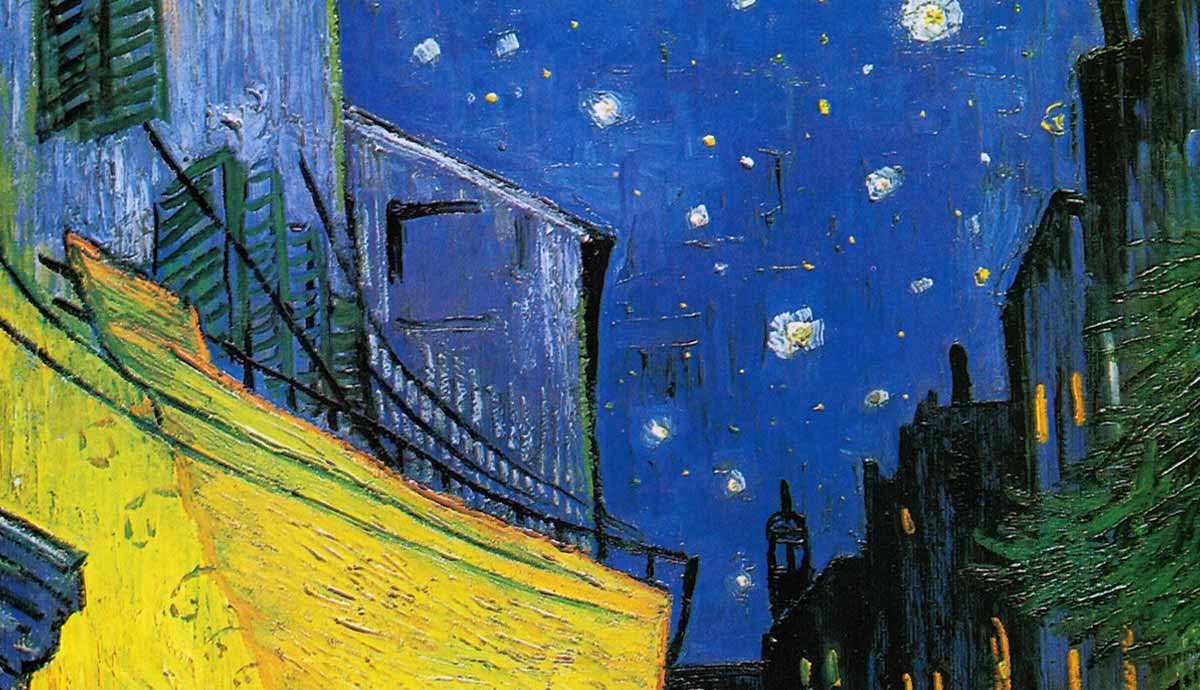
For many years, Black artists were shunned away by the general art historical narrative, but that did not stop them from creating exceptional works of art. Black art is not necessarily political, but, just like any art, it is still deeply rooted in the identity of its creator. Below is a by no means definitive list of 12 outstanding Black artists everyone needs to know.
12. Norman Lewis: the Great Black Artist of Abstract Expressionism

- The only Black Abstract Expressionist of his generation.
- Grew disillusioned about the political power of art.
Norman Lewis was truly a great American artist and the only Black Abstract Expressionist of the first generation. A social realist in his early career, Lewis moved to abstraction in the mid-1940s. By then, Lewis had grown tired of depicting an American life that was so exclusive and merciless to a large part of the country’s population.
Lewis spent years trying to find a way for Black artists to affect the political situation through their art, trying to find a cure for systemic racism and violence. Despite working with various anti-racism groups, towards the end of his life, Lewis was not so sure about the world-changing power of art. He argued that art was useless in the political struggle and that protesting would have more chances of bringing about change.
11. Sam Gilliam (1933 – 2022)

- One of the most significant color field painters in the US.
- Famous for his canvases inspired by African-American patchwork quilts.
Born in Mississippi, Sam Gilliam is undoubtedly one of the greatest American color field painters. Gillam’s most famous works include unsupported canvases that hang loosely from gallery walls or ceilings. These structures exist in the intersection of painting and sculpture, demonstrating the fluidity of art forms. Apart from fellow abstractionists, Gilliam’s main inspiration came from African-American patchwork quilts he frequently saw in his childhood.
Gilliam explained his deliberate choice of form by stating that his works did not need frames. The space around them becomes their frame. Unlike traditional painting, Gilliam’s works also allow the viewer to move around them, making the engagement with paintings much more personal and interactive.
10. Chéri Samba (1956 – )

- One of the most influential contemporary African artists.
- His style is a combination of tradition and modernity.
Chéri Samba, one of the most renowned contemporary African artists, started his artistic career in 1972 at the age of 16. At first, he painted signs and did not fill gallery walls with his works. However, the situation changed soon enough, and three years later, Samba already had his own studio in Kinshasa, Democratic Republic of Congo.
Today, Samba’s works hang in the world’s most prestigious museums and sell in major auction houses. His style may seem naive to some, with thick contours, bold colors, and glitter, but at the heart of his work is the African daily life and the dialogue of tradition and modernity.
9. Horace Pippin (1888 – 1946)

- Fought in WWI and his right arm remained paralyzed.
- Depicts anti-war, Biblical, and everyday scenes.
Horace Pippin was a celebrated self-taught American painter. Born in Pennsylvania to a single mother, Pippin had to work to support his family from an early age. At the same time, the young boy often sketched racehorses on spare pieces of fabric.
In 1917, Pippin went to fight in World War I, coming back home a year later with his right arm partially paralyzed because of a bullet wound. After finishing his time in the military, Pippin became a full-time painter. He started painting in order to train his injured arm, but he quickly gained recognition for his distinctive style. Many of his works were anti-war scenes, while many others showed Bible illustrations or scenes from everyday life in America.
8. Kara Walker (1969 -)

- Famous for her black-on-white silhouettes.
- Depicts the lives of African Americans before the end of slavery.
Kara Walker is one of the most influential and recognizable contemporary Black artists. Walker is a multidisciplinary artist who works with drawing, painting, and sculpture. She is best known for her black-on-white silhouettes. These cut-outs were a popular hobby for the white middle and upper classes in the 18th and 19th centuries.
While the technique suggests a romantic and cheerful narrative, Walker’s collages are full of sex, violence, and torture. Walker’s shocking and grotesque imagery combined with the traditional pretty-looking cut-outs leaves an unsettling effect on the viewer, revealing the abhorrent side of life before slavery was abolished.
7. Faith Ringgold (1930 -)

- A political artist addressing systemic racism and slavery.
- Her French Collection series integrates Black and European art.
Faith Ringgold is undoubtedly one of the greatest African American artists ever. Her techniques range from traditional painting to performance and mask-making. Most of her early works were paintings. She later moved on to sewing and mixing various types of media. Ringgold is a profoundly political artist, frequently addressing systemic racism and the history of slavery in her works.
In her French Collection series, Ringgold establishes a connection between the realities of African Americans and the art historical canon. By creating quilts featuring the most iconic modernist paintings and placing her character, a Black American woman traveling to 1920s Paris into them, she seamlessly integrates Black art into the traditional Euro-centered perspective.
6. Yinka Shonibare (1962 -)

- Her artworks address colonialism and post-colonialism.
- Known for her use of African wax print fabrics.
A British-Nigerian artist, Yinka Shonibare is one of the wittiest and most knowledgeable commentators on colonialism and post-colonialism. Shonibare explores African identity through traditional African wax print fabrics.
While many Africans now wear them with pride, these fabrics were invented in the Netherlands, where they were a part of the colonial trade process. This did not stop them from becoming a symbol of shared culture. From these fabrics, Shonibare creates authentic Western Victorian-era dresses. Combining the material and the cut, Shonibare simultaneously explores the hypocrisy and cruelty of the colonial era and fantasizes about the alternative route of history where the West accepted Africans.
5. Zanele Muholi (1972 -)

- Photographer exploring Black queer indentity.
- Their artworks are a mix of art and activism.
South African photographer Zanele Muholi explores and celebrates Black queer identity. Their works are often self-portraits frequently focused on the doubled Otherness of the Black queer community. As Black people, they are subject to racism, while also not fitting into the heterosexual cisgender norm.
Another focus of Muholi’s work revolves around documenting gender-based and sexuality-based violence in South Africa. This activity puts Muholi’s life and well-being at constant risk. In 2012, their apartment was robbed; the intruders took nothing but the records of Muholi’s five-year research on hate crimes against lesbians in South Africa. Muholi’s work is an intersection of art, activism, and research.
4. El Anatsui (1944 -)

- Ghanaian sculptor famous for using everyday materials.
- His work addresses overconsumption, environmental impact, and African history.
The great Ghanaian sculptor El Anatsui became famous for his installations made out of everyday materials that are usually considered trash like metal seals, bottle caps, and newspapers.
By mixing African craft tradition with abstract forms, El Anatsui addresses the issues of overconsumption and environmental impact, while also focusing on the history of the African continent. For example, the liquor bottles he uses belong to Western brands, yet all of them were made in Africa.
The crucial element of El Anatsui’s installation is motion. The cloth woven from bottle caps is fluid, just like a piece of regular fabric, and it readily takes the shape of every object it is placed upon.
3. Alma Thomas (1891 – 1978)

- One of the most influential exponents of American Abstract Expressionism.
- Her work is inspired by nature and does not address social/political issues.
Alma Thomas is undoubtedly one of the superstars of American Abstract Expressionism. After working as an art teacher her whole life, Thomas started a full-time artistic career in her seventies. However, her age did not stop her from creating truly remarkable works. Thomas’ work is frequently compared to the Pointillist art of Paul Signac or to Byzantine mosaics.
Unlike many other Black artists, Alma Thomas avoided mixing social and political issues with her work. For Thomas, the main inspiration came from nature, where it made no difference if she was Black or white, male or female, young or old. Another inspiration came from outer space. After the 1969 moon landing, Thomas produced a series of space-related works.
2. Jean-Michel Basquiat (1960 – 1988)

- Basquiat is an icon of 2oth-century American art.
- His work mixes graffiti, abstract art, poetry, and political issues.
The legend of American art, Jean-Michel Basquiat is undoubtedly one of the greatest artists of the 20th century. His earliest artistic influence came from anatomical drawings his mother brought him while he was recovering after a car accident. However, his biggest inspiration came from graffiti. Kicked out of his parents’ house at 17, Basquiat had to work odd jobs during the day so that he could paint during the night.
The art world quickly noticed Basquiat. At the age of 19, he was already selling upcycled clothing designs through upscale Manhattan boutiques. Yet his real rise to fame happened in his twenties when he found himself at the center of New York’s bohemian life. Basquiat’s oeuvre mixed abstract art, graffiti, poetry, and political commentary, turning him into an icon of his generation.
1. The Pioneering Black Artist Joshua Johnson (1763 – 1824)

- A self-taught artist who learned to paint while enslaved.
- Portraitist who became the first professional Black American painter.
The first place on our list goes to a true pioneer who proudly called himself a self-taught genius. Joshua Johnson was the first known African American painter who made a career out of art. The rediscovery of his oeuvre happened more than a century after his death. However, the details about his life came to light much later.
In the 1990s, art historians discovered that Johnson was a son of an enslaved woman and a white man. His father purchased Johnson from another slave owner and freed him when the artist was 19 years old. Soon after he finally became free, Johnson began offering his services as a portraitist, so Johnson probably learned to paint while he was enslaved.
FAQs
How did the historical context of slavery and racism impact the styles and themes found in Black art?
The historical context of slavery and racism has profoundly shaped the styles and themes of Black art, creating a complex and influential body of work. In particular, it has infused Black art with a powerful sense of purpose, driving artists to express their experiences, preserve their culture, and fight for social justice.
How has the recognition and representation of Black artists changed over time, and what challenges do they still face?
The journey of recognition and representation for Black artists has been marked by significant progress, yet persistent challenges remain. Black artists faced severe limitations due to slavery, segregation, and systemic racism. Their work was often marginalized or excluded from mainstream art institutions. However, even in these times, some artists created amazing works. The Harlem Renaissance of the 1920s marked a pivotal moment and the Civil Rights Movement further amplified the voices of Black artists. Today, despite progress, Black artists are still underrepresented in many art institutions and collections.










